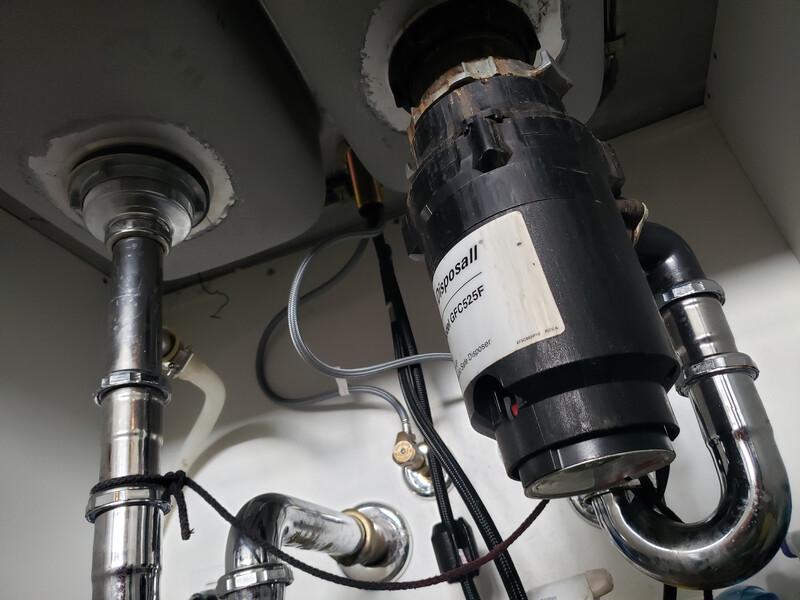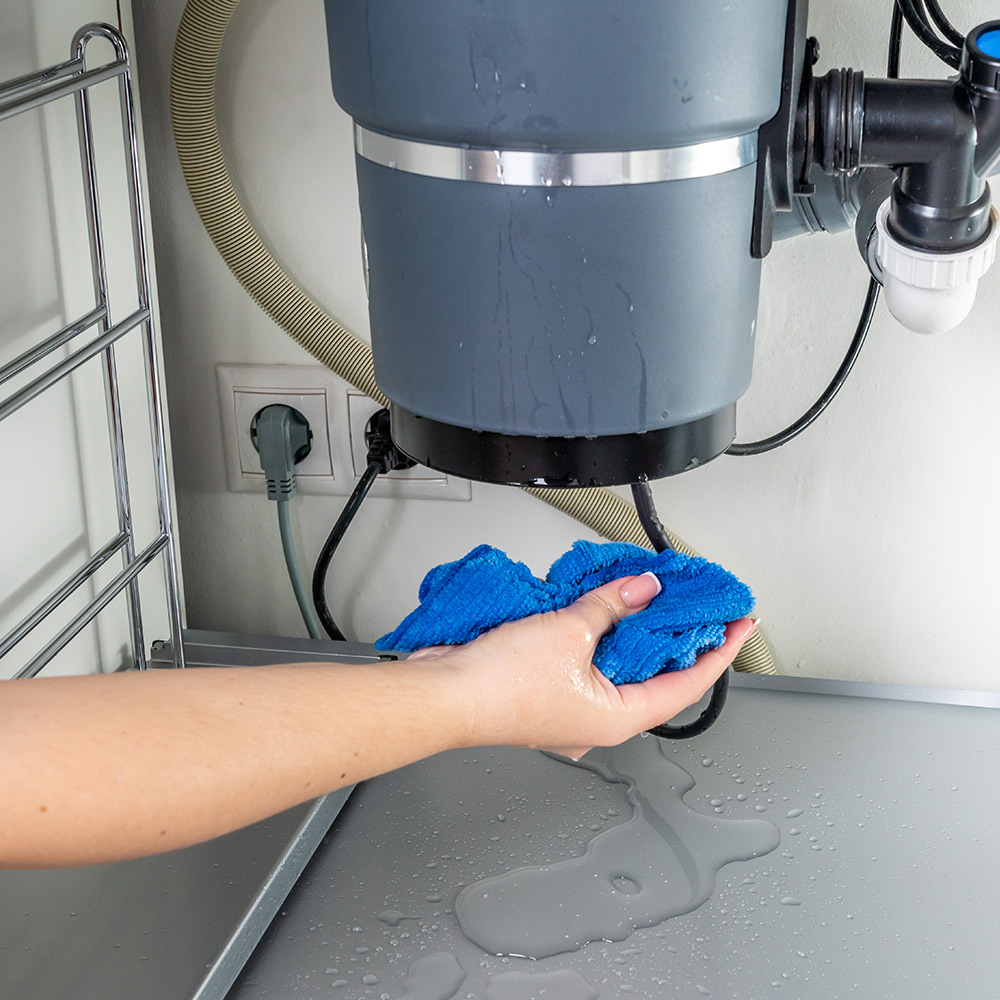The Guide to Resolving a Leak in Your Garbage Disposal
The Guide to Resolving a Leak in Your Garbage Disposal
Blog Article
Almost everyone seems to have their own thinking in relation to Why Is My Garbage Disposal Leaking From the Bottom?.

Garbage disposals are necessary cooking area devices that assist in getting rid of food waste effectively. However, a leaking garbage disposal can be an irritating and unpleasant problem to deal with. The good news is, many leakages can be dealt with conveniently with a few straightforward actions. In this article, we will certainly review how to take care of a dripping garbage disposal properly.
Introduction
Garbage disposals are installed under kitchen sinks and are developed to shred food waste into smaller sized pieces, allowing it to travel through the pipes system easily. While these gadgets are normally trusted, leakages can occur in time as a result of damage, loose connections, or damage to the device.
Step-by-Step Guide to Dealing With a Leaking Garbage Disposal
Switch off the Power
Before attempting any type of repairs, ensure that the power to the garbage disposal system is shut off to avoid the threat of electrical shock.
Situate the Leakage
Identify the exact location of the leakage and identify the cause
Tighten Links
Use a wrench to tighten any type of loosened links between the disposal device and the pipes system.
Change Seals or Gaskets
If the leakage is due to used seals or gaskets, get rid of the old components and replace them with brand-new ones.
Patching Cracks or Openings
For cracks or holes in the disposal system, use epoxy or an appropriate patching product to seal the damaged location.
Identifying the Source of the Leakage
Prior to trying to repair a dripping garbage disposal, it is essential to recognize the source of the leakage. This can generally be done via visual examination or by performing simple tests.
Visual Evaluation
Evaluate the garbage disposal unit very carefully for any indicators of water leakage. Pay very close attention to locations around seals, gaskets, and connection factors.
Checking for Leakages
One method to examine for leakages is by running water through the disposal unit and looking for any type of visible indications of leakage.
Typical Reasons For Leakages in Rubbish Disposals
Worn Seals and Gaskets
Seals and gaskets play a critical role in stopping water from dripping out of the garbage disposal. With time, these parts can weaken, leading to leaks around the disposal unit.
Loose Connections
The connections between the waste disposal unit and the pipes system can end up being loosened in time, triggering water to leakage out throughout operation.
Splits or Openings in the Disposal Unit
Physical damage to the waste disposal unit, such as fractures or holes in the real estate, can likewise lead to leakages.
Devices and Materials Needed for Taking Care Of a Leaking Garbage Disposal
Before starting the repair service procedure, gather the required tools and materials, consisting of a screwdriver, adjustable wrench, plumber's putty, substitute seals or gaskets, and epoxy or patching material for repairing cracks or holes.
Testing the Waste Disposal Unit After Repair Work
When the repair is full, examine the garbage disposal by running water via it to make certain that the leakage has been resolved.
Preventive Maintenance Tips to Stay Clear Of Future Leaks
To avoid future leaks, it is necessary to perform regular maintenance on your waste disposal unit. This consists of maintaining it clean, staying clear of putting non-food items or difficult items down the disposal, and periodically checking for leakages or other problems.
Verdict
In conclusion, fixing a leaking waste disposal unit is a reasonably uncomplicated procedure that can be completed with basic tools and products. By complying with the actions outlined in this short article and exercising preventative maintenance, you can keep your waste disposal unit in good working condition and stay clear of expensive fixings in the future.
What to Do About a Leaking Garbage Disposal
A leaking garbage disposal often goes unnoticed until you confront a sopping cabinet, a foul-smelling puddle, or an audible drip-drip-drip from the unit. The fix can be frustrating, too, because the leak can stem from a number of components in the system. Fortunately, with a little sleuthing, you can zero in on the leak and—depending on the exact location—stop the icky oozing and repair the component that caused it. Worst case scenario, if it turns out that the garbage disposal must be replaced, installing a new one is a reasonable do-it-yourself task for those with basic plumbing skills. Read on to keep the cash you’d otherwise hand over to a pro.
Prepare to find the leak
Prior to testing the garbage disposal for leaks, unplug it at the wall outlet and turn off the power from the breaker box to prevent electrical shock. Then insert a watertight sink stopper into your sink drain and wipe the unit dry with a clean cloth. In any handy container, mix a few drops of food coloring into a few cups of water, and pour the dyed water onto the sink stopper to help you locate the leak.
Investigate the source
the top, where the disposal meets the sink drain the side, where the dishwasher hose or main drain pipe connects to the disposal or the bottom of the unit Inspect each of these locations while gliding a light-colored rag over the unit; the dyed water will readily show on the rag and reveal the location of the leak. If a leak isn’t immediately apparent, remove the sink stopper and pour a few more cups of dyed water down the sink drain, then check for leaks again. Leaks near the top of the unit are more likely to show themselves while the sink is plugged, while side and bottom leaks are more noticeable while the sink is unplugged.
The metal sink flange that sits directly inside the sink drain is typically sealed around the top with plumber’s putty (a clay-like sealant) and then secured from under the sink with bolts. If the plumber’s putty deteriorates, or the bolts loosen, the flange can no longer form a watertight seal between the sink drain and the disposal—which could cause a leak at the top of the unit.
To reseal the leaky flange, you must first detach the garbage disposal. Start by loosening the screws securing the main drain pipe to the disposal, then loosen the screws in the metal clamp securing the dishwasher hose to the disposal and detach the drain pipe and dishwasher hose from the disposal. Loosen the screws in the mounting ring that connects the disposal to the metal mounting assembly beneath the sink, then pull down the disposal and carefully set it on a clean, dry surface. Loosen the bolts in the mounting assembly with a wrench, then pull down the mounting assembly and set it near the disposal.

I discovered that review on Why Is My Garbage Disposal Leaking From the Bottom? while doing a lookup on the web. Are you aware of another person who is sincerely interested in the subject? Do not hesitate to share it. Many thanks for your time. Don't hesitate to visit our site back soon.
Click Here To Find Out More Report this page